AMD’s New EPYC 7F52 Reviewed: The F is for ᴴᴵᴳᴴ Frequency
by Dr. Ian Cutress on April 14, 2020 9:45 AM EST- Posted in
- CPUs
- AMD
- Enterprise
- Enterprise CPUs
- EPYC
- SP3r2
- CPU Frequency
- Rome
- 7Fx2
CPU Performance: Rendering and Synthetics
For the rest of our CPU tests, we’re using a mix of rendering and synthetic workloads. This is slightly different to our previous server reviews, due to some adjustments, and we hope to be running something similar to our standard server workloads in the near future.
All CPUs are run with SMT/HT enabled.
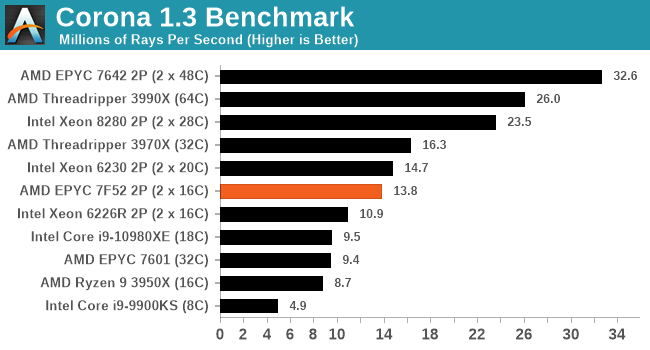
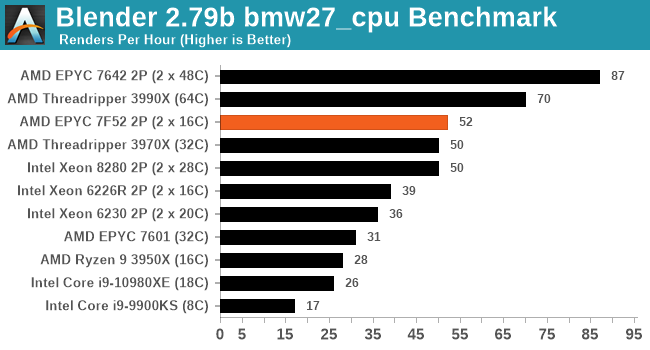
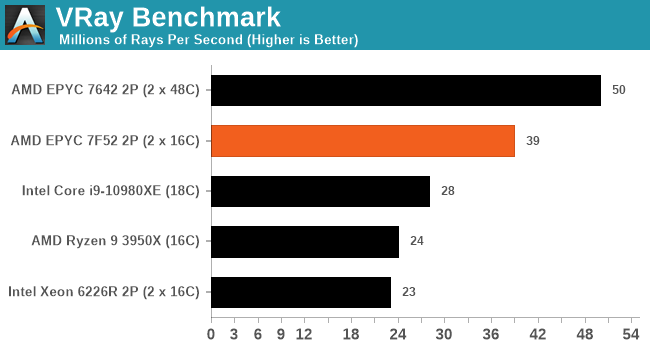
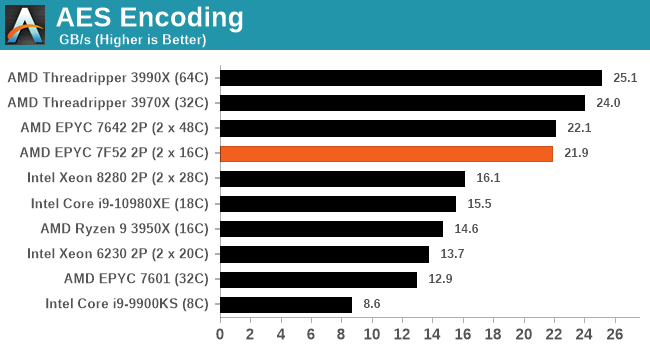
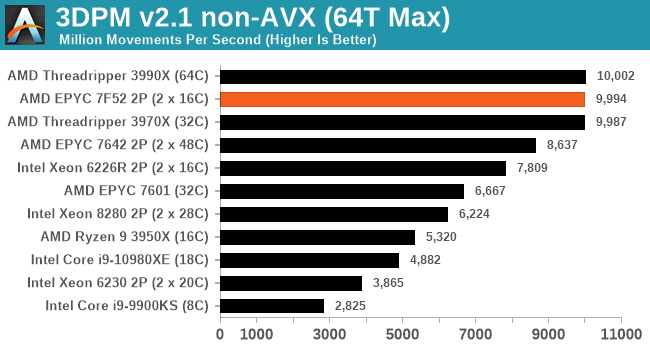
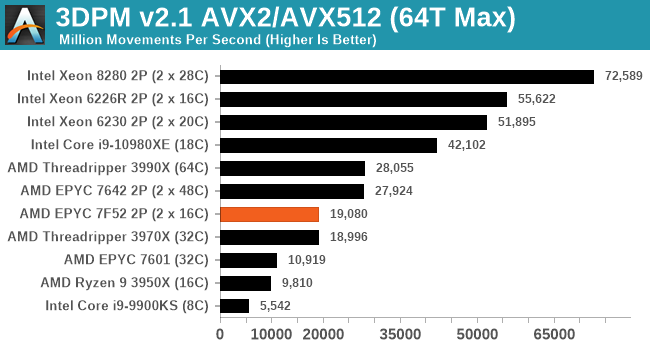
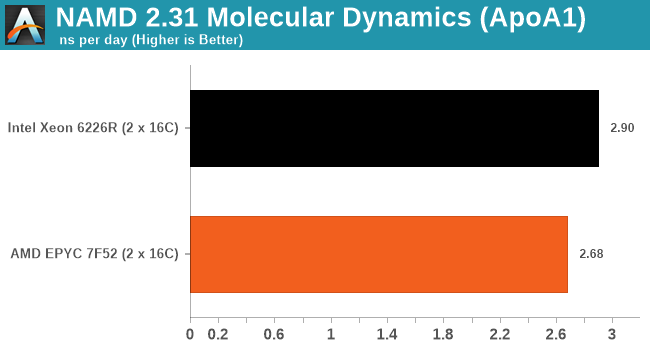

Even with the addition of a socket-to-socket in the mix, the dual 7F52 setup scores up to +100% in some benchmarks over the previous generation EPYC 7601. Against Intel’s latest 16-core Cascade Lake Refresh hardware, the AMD takes a sizeable lead in most benchmarks (except notably AVX512), which is perhaps to be expected given the price difference and power difference. What is interesting is how in certain workloads, the 2P 7F52 setup can make a reach up for the Xeon 8280s, despite the 8280s being 3x the cost each.










97 Comments
View All Comments
Qasar - Tuesday, April 14, 2020 - link
just get ryan to send you some of those watts up units. i have one as well, very handy :-)DanNeely - Wednesday, April 15, 2020 - link
US models are probably 110V only, and won't work with UK 220V power.Qasar - Wednesday, April 15, 2020 - link
just checked.. there are only ones for 110v. which is too badtyleeds - Thursday, April 16, 2020 - link
Hey Ian. Use the american units and run them off a double-conversion UPS. You can set the output to 110/60hz and nobodies the wiser.duploxxx - Friday, April 17, 2020 - link
where is Johan De Gelas? He used to write quite some nice reviews of server benchmarkskobblestown - Wednesday, April 15, 2020 - link
As I noted in a previous comment, many people here are not just about the numbers, but about the insights. How different architectural choices influence performance. So while I wouldn't mind to have the benchmarks that cover the target applications of a CPU line, I will not like it if it sticks to just that. And in this particular case, the people that would read it as an evaluation guide for specific application are a very small minority of Anandtech's reader base. At least I think so.Of course, it's a pity that people like you don't have anywhere else to go, servethehome.com notwithstanding - it has its problems too.
The Hardcard - Tuesday, April 14, 2020 - link
I wonder about the appeal of these for workstation use. Unless AMD allows Threadrippers to reach their memory capacity potential, this might be the most powerful option - price notwithstanding.schujj07 - Tuesday, April 14, 2020 - link
If you are going to be using software that can get the most out of this chip, much like the Intel W-3275 or Threadripper 3970X, then the hardware cost is minimal. The amount of time you save of the content creation or per core licensing, depending on the software, is worth the added money. In enterprise environments the server cost is minimal, especially compared to SAN and software licenses. The company I work for got a SuperMicro 2U4N with dual Epyc 7502s and 1TB RAM per node and the cost was ~$60K. While this isn't officially supported SAP HANA, it does pass their production performance assessment tool. Just to get a SAN that is SAP HANA certified starts at ~$250k. The SAP HANA DB can run over $1 million just for licensing. VMware vSphere Enterprise Plus licensing is $5800/socket for 3 years if your CPU has less than 32 cores, if you have more than that you need to get a second license for that socket. You can quickly see where $3100/CPU is pennies in the grand scheme of things.nft76 - Tuesday, April 14, 2020 - link
Why is Cascade Lake Xeon so much slower than others, also Intel's consumer parts, in some of the SPEC2006 tests? In libquantum, lbm, and soplex in particular the difference is much greater that I would have expected.anonomouse - Tuesday, April 14, 2020 - link
Those are all of heavily memory (latency, bandwidth) bound workloads in SPEC, too, which points to something very strange. CLX-R should not be >5x slower than CLX on lbm.